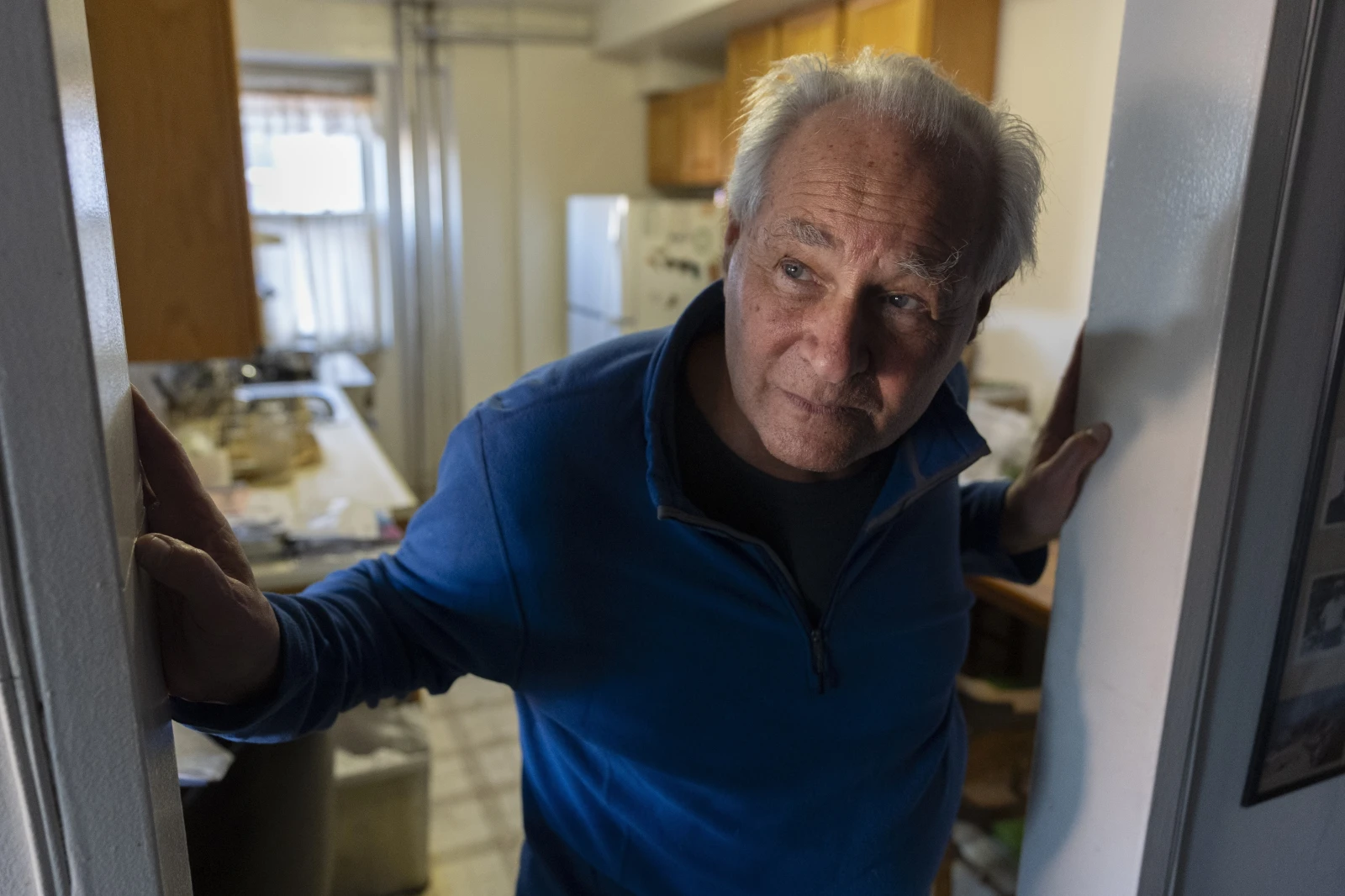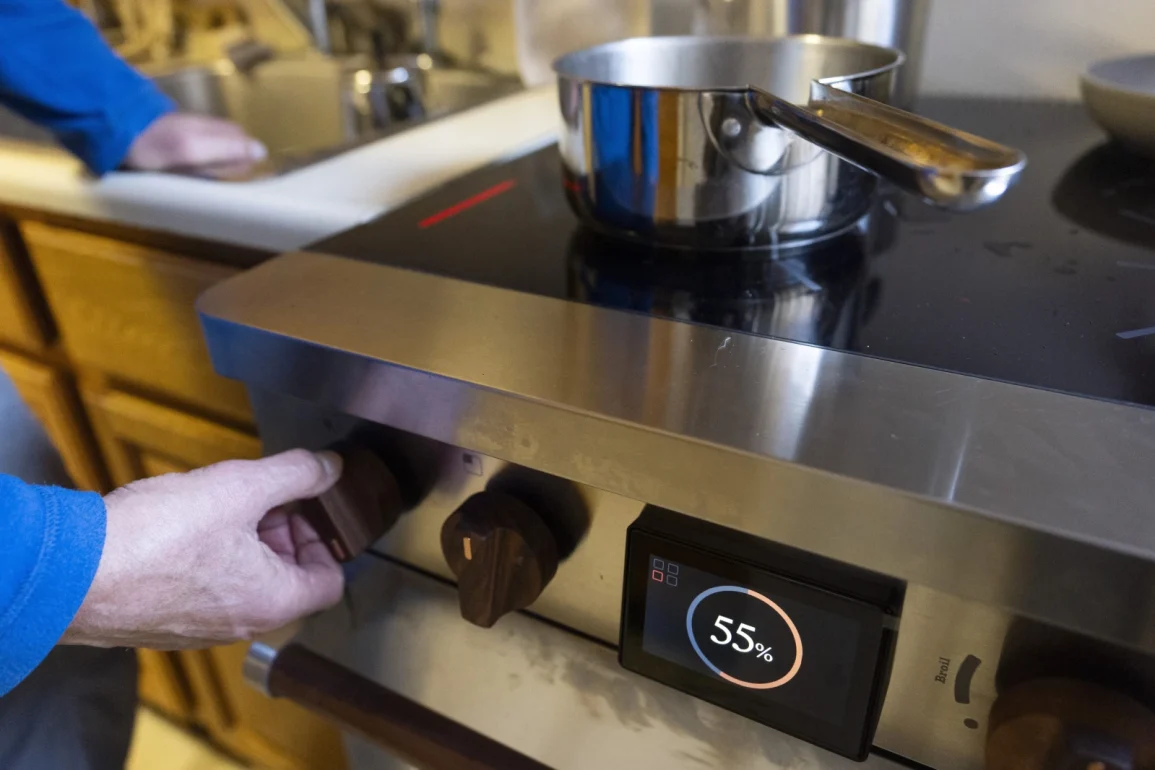For years, Ed Yaker, treasurer of a New York City co-op with nearly 1,500 units, and his fellow board members have dealt with frequent gas leaks. These issues often result in the gas being shut off for the entire building, leaving residents without a stove for months until costly repairs are made to the gas lines.
When Yaker learned about a California startup called Copper that was making an electric stove and oven that could simply be plugged into a regular outlet, he was eager to give it a try. The sleek, four-burner electric induction stove runs on 120 volts, so there’s no need to pay a licensed electrician thousands of dollars to rewire to 240 volts, which is required for many electric stoves.
“In terms of, ‘Is this the way to go?’ It’s a no brainer,” Yaker said, demonstrating how a quart of water boiled in about two minutes. His apartment is full of books on energy and climate change, and the stove’s energy efficiency was another big reason for his interest.
Yaker’s decision also ties into health concerns. Gas stoves, used by 47 million Americans, release pollutants such as nitrogen dioxide, which has been linked to asthma, and benzene, a substance that can cause cancer.
“You wouldn’t stand over the tailpipe of a car breathing in the exhaust from that car. And yet nearly 50 million households stand over a gas stove, breathing the same pollutants in their homes,” said Rob Jackson, an environmental scientist at Stanford University and lead author of a study on pollution from gas cooking.
Jackson, who switched to an electric stove after researching the effects of gas stoves, noted the immediate rise in pollutant levels every time he turned on a gas burner or oven.
Induction stoves are also seen as a way to combat climate change. Emissions from buildings—such as those from cooking, heating, and cooling—make up a significant part of global warming. Gas stoves waste about half of the flame’s heat, but electric stoves can be up to 80% efficient, with induction stoves reaching up to 90% efficiency because they only heat the areas that are in contact with the pot.
Even when they’re turned off, gas stoves contribute to greenhouse gas emissions. Gas stoves can leak methane, the main component of natural gas, from loose fittings and connections. Studies have shown that this methane leakage from stoves in U.S. homes has a climate impact comparable to the emissions from 500,000 gasoline-powered cars.

Copper’s induction stove comes with a smart battery feature, allowing it to charge when electricity rates are low, helping people avoid higher peak-rate charges when cooking.
However, these new Copper stoves are expensive. Early buyers are using government incentives to help reduce the cost. When Yaker purchased his stove, it cost $6,000, but a federal tax credit for clean energy appliances reduced that price to $4,200.
Copper has since struck an agreement with the New York City Housing Authority to purchase 10,000 stoves at a maximum price of $3,200 each, which will be delivered in 2026.
Eden Housing, a nonprofit affordable housing developer, retrofitted a 32-unit building in Martinez, California, with Copper stoves using state and local programs. The nonprofit hopes to buy more stoves in the future.
“It’s pretty cool, it looks nice and it’s easy to clean,” said Jolene Cardoza, a resident. Her daughter’s asthma was aggravated by the old gas stove, and she’s pleased that the Copper stove doesn’t release harmful pollutants.
However, not all tenants have found the transition to induction cooking smooth. “I don’t really like the way it cooks my food in the oven,” said Monica Moore. She noticed a difference in how her cornbread turned out and, while impressed with how quickly the stove boils water, she misses cooking with a flame. She also found it a hassle to replace her old pots with ones that are compatible with induction stoves.
For Jackson, the shift to electric cooking is an important step. “I think shutting the gas off to our homes and electrifying our homes is one of the best things that we can control individually to reduce our personal greenhouse gas emissions. I think of cars and homes as the two places to start for reducing our greenhouse gas footprint,” he said.


